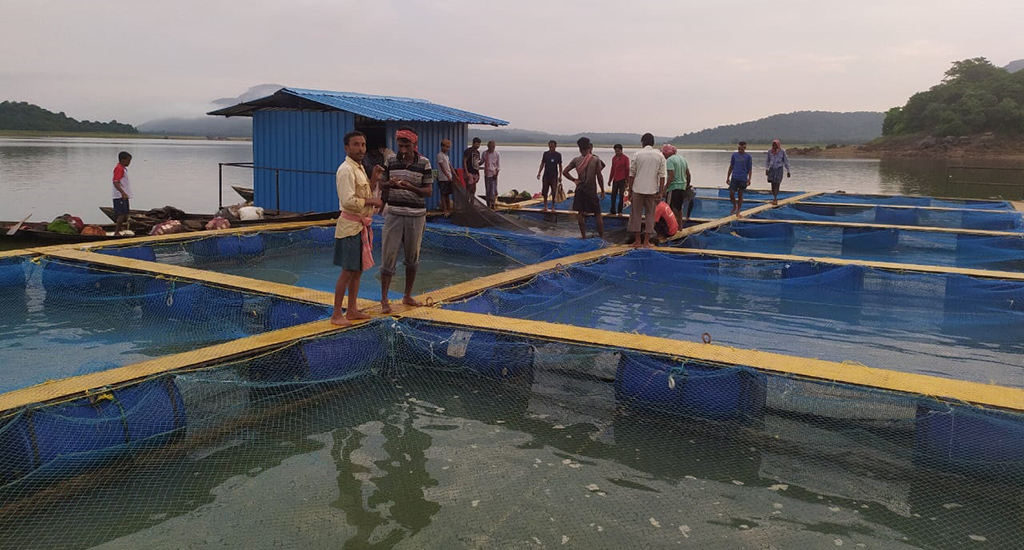
Same dam yields more fish through cage fish farming
With increasing number of fishermen vying for a catch in the same dam, their livelihood was at stake. Growing fish in cages within the dam helps the fishermen earn more.

With increasing number of fishermen vying for a catch in the same dam, their livelihood was at stake. Growing fish in cages within the dam helps the fishermen earn more.
Abhik Sodi fishes at the Satiguda Dam, which is near his village in the Malkangiri district of Odisha.
He has been catching rohu (Labeo rohita) and catla (Lobeo catla) for over a decade.
But the catch has been dwindling with each passing year.
“I used to catch 15-20 kg of fish from the dam even a decade ago. But now it’s difficult to get even 4 kg of fish. Because the number of fishermen is also more now,” he said.
But he sees hope in the cage aquaculture being practised in a part of the same dam.
Cage aquaculture – also known as cage culture – is fish cultivation in water bodies like reservoirs and dams where the water current is not too high.
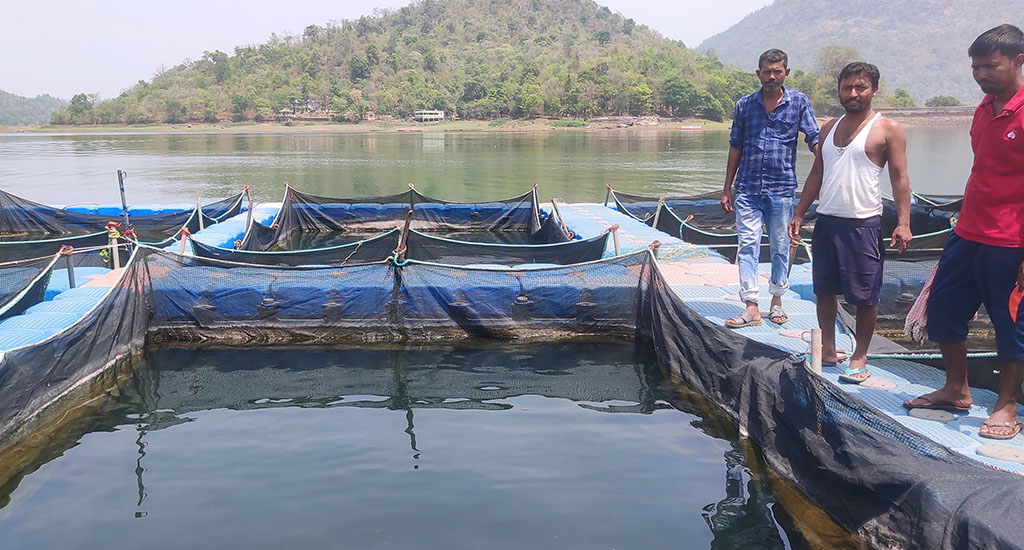
“The fish are grown in enclosed net cages. The structure is made up of floating frame and a mooring system,” said Narsingh Mund, District Fisheries Officer, Malkangiri.
The fish are fed and handled through an opening at the top of the cages. Each cage can hold around 2,000 fingerlings.
“The fish get ample supply of oxygen in the river water,” Mund told Village Square.
Cage aquaculture started in 2019-20 in the Satiguda Dam.
“We started with 10 cages and 20,000 fingerlings in September 2019. Around 4,000 fingerlings died and the rest grew up to about 1.2 kg each in over a year,” said Sushanta Kumar Biswas, secretary of the Satiguda Primary Fishery Cooperative Society.
Practicing collective farming, the society’s 218 members from 15 villages around the dam depend on cage aquaculture for a livelihood.
The cost of the fish seed and feed was nearly Rs 7 lakh. The government provided these to first-time cage culture farmers.
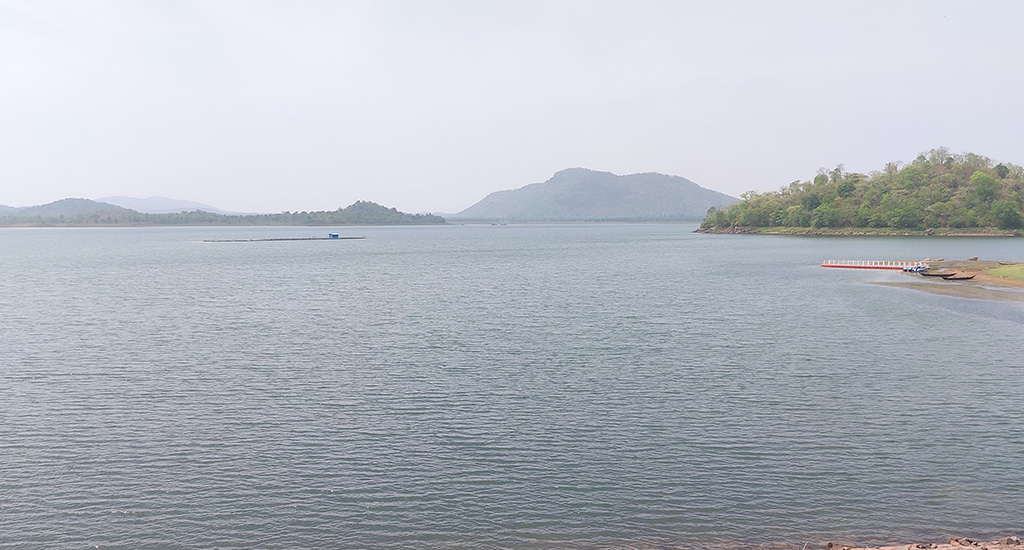
Presently there are 66 cages of two different sizes in the dam that spreads over 710 hectares. At 4m, the water depth is the same for all the cages.
The fishermen cultivate Pangasius variety of fish in the cages.
In December 2020, the production was six tons.
“We managed to sell the entire yield in local markets and recover the cost. But we didn’t make any profit,” Biswas told Village Square.
The fishermen said that the catch is safe in the enclosures and also the chances of diseases spread is minimal.
In May 2021, around 76,000 fingerlings were introduced in the dam. The state government met the total investment of Rs 20 lakhs.
The fish grew to the marketable size of 600-700 grams in the next seven months.
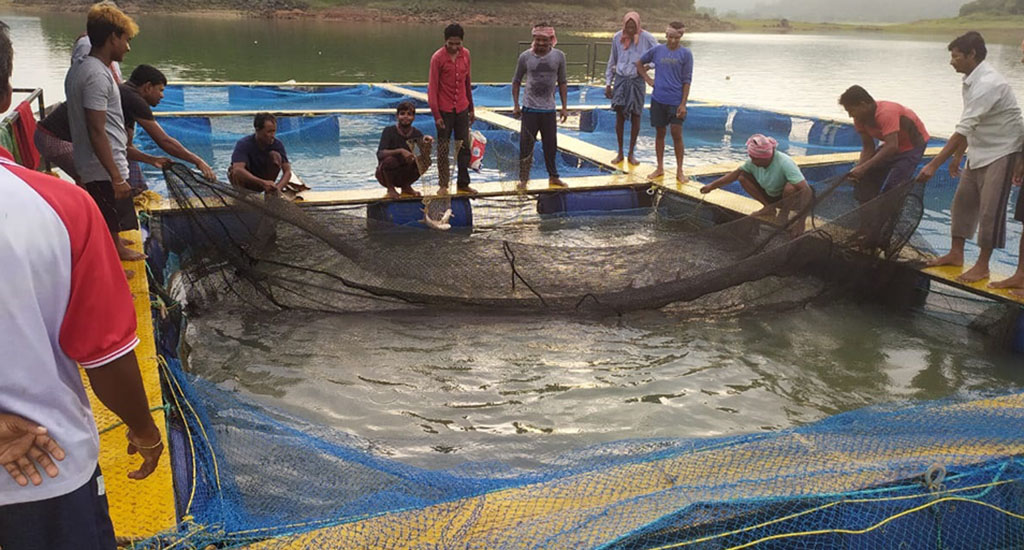
“We started harvesting in January and have already harvested six tons of fish which brought us Rs 5 lakhs,” said Biswas.
The society expects to earn Rs 25 lakh this year.
“We’ll let the members decide if they want to take their share of income or use it for furthering the business,” added Biswas.
Fishermen find the cage fish farming a perfect alternative to fishing in the dam.
There were less than 30 fishermen who were dependent on the dam till about two decades ago. But now there are over 200. So the catch that each fisherman could take reduced.
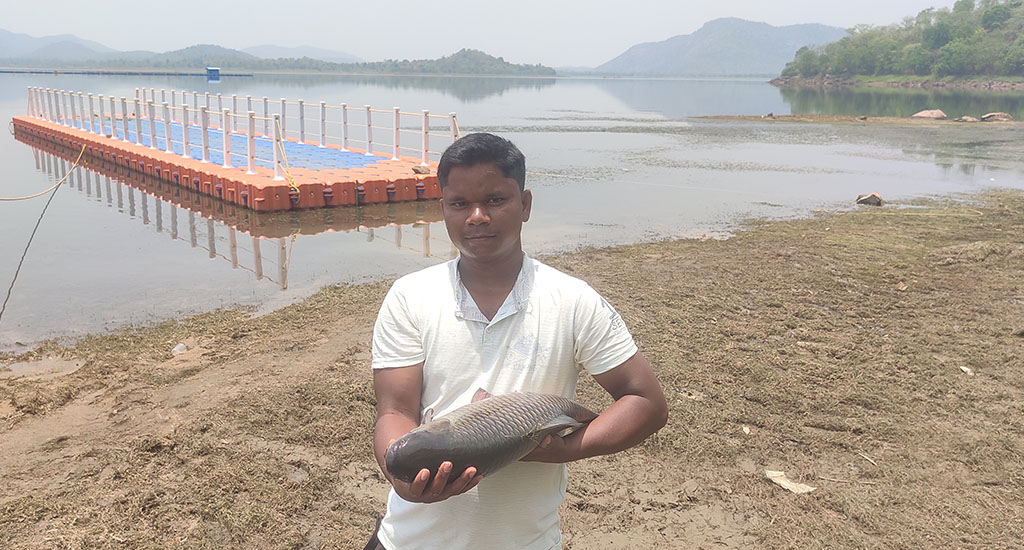
“But cage farming has come as a new ray of hope for us. We are collecting fish from the dam while the cage culture offers us additional income,” said Rabin Sardar, a fish farmer.
The fisheries’ department officials say that Pangasius fish is in demand locally. It’s sold at a price of Rs 110-120 per kg.
Odisha is the fourth largest fish producing state in India, with a production of 9.91 lakh metric tons in 2021-22.
Odisha’s annual per capita consumption of 16.34 kg in 2020-21, is higher than the national consumption of 9 kg.
The state has a huge potential for cage culture as it has freshwater bodies of ponds lakes, etc. and a water spread of nearly 6.84 lakh hectares.
To harness the potential, the state government is also taking up cage aquaculture at the Hirakud dam in Sambalpur district.
The lead image at the top of this page shows fishermen practising cage aquaculture in the Satiguda Dam (Photo courtesy Satiguda Primary Fishery Cooperative Society)
Gurvinder Singh is a journalist based in Kolkata.